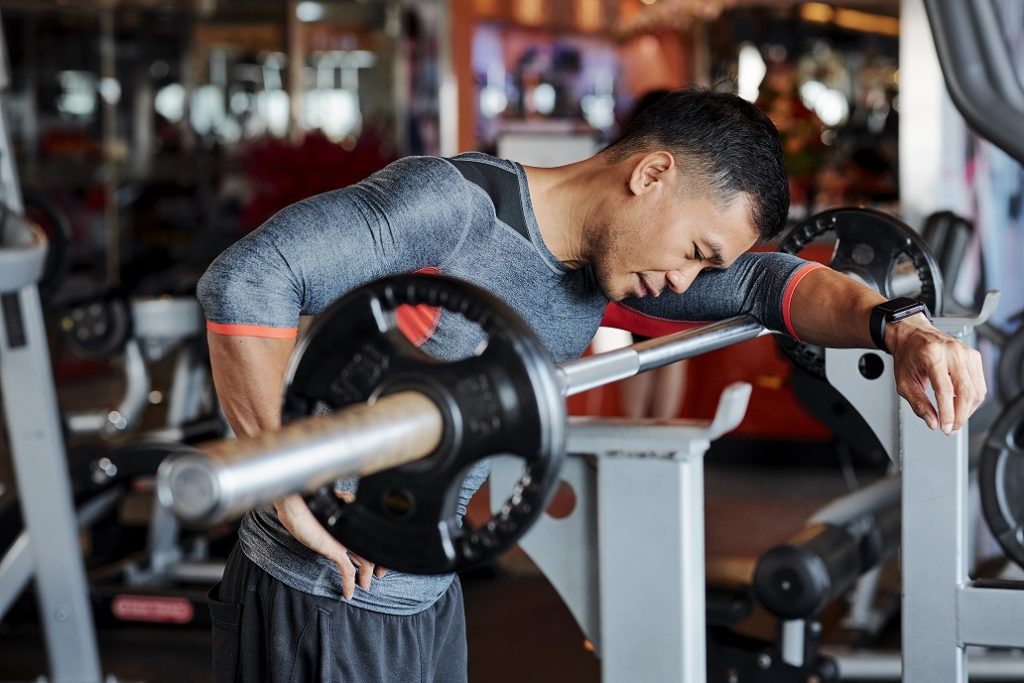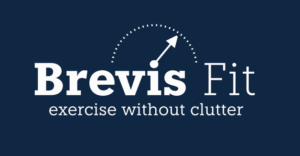Introduction
This article is our third and final part of the blog series about Exercise progress. In this one, we will look at the concept of strength. By now, we know that Exercise improves our body shape. But the improvements in body shape are less drastic and less important (for most people) than the improvements in strength.
Progress in strength or strength gain is the key to our longevity and life quality. And Exercise (as we define it at BrevisFit) is the most efficient way to achieve that. For that reason, doing exercise is of vital importance. Still, there’s the risk of us trying to speed up the progress by doing more. But simply doing more Exercise is not better and sometimes can be even detrimental.
And for this reason, we will explore the markers of strength progression. We will lay out the main reasons for not achieving the awaited success and provide guidelines to put you back on the right track.
Muscular strength - The fountain of youth
Previously, we have defined the body shape-related benefits of Exercise [1]. We have highlighted increases in muscle mass and bone density. These are essential for our wellbeing and the prevention of age-related diseases; sarcopenia (loss of muscle mass) and osteoporosis (losing bone minerals). We also noted that we need to use higher resistance for improving our bone mineral density. That is something we will continue to emphasize in this post. Heavier loads are namely more favorable for strength improvements than lighter ones[2][3]. Still to note, heavier loads only mean a resistance, with which we can safely reach a point of muscular failure between 30 – 120 seconds.
RETAINING MUSCLE MASS IS NOT ENOUGH TO COMBAT AGE RELATED STRENGTH LOSS
It has been proposed, that gain in muscle mass, and strength gain can be separated. This means that a program can lead to improvements in muscle mass only. But, research has shown that this is insufficient to combat age-related strength decline. So, to meet the goals and scope of Exercise [3], our physical activity must induce improvements in both aspects. That is growth in muscle size and strength.
EXERCISE IMPROVES STRENGTH AND ENDURANCE
While both muscle mass and strength greatly improve our life quality, it appears that strength is far more critical [3]–[5]. A stronger muscle produces more force and fatigues at a slower rate. With Exercise, we, therefore, increase our muscular strength and endurance [6].
The relationship between strength, skill, and fatigue
As regards muscles, strength denotes their ability to produce force. This does not mean how much weight we can lift, but how much force the muscle can generate internally.
STRONGER MUSCLES PRODUCE MORE FORCE
When we get stronger, we can more easily overcome the same physical challenges. It is because we create a larger headroom as we gain strength. In that case, fewer resources are required to overcome the same resistance. And in terms of our muscles, the resources come from our motor units [7], [8]. By increasing the strength of our motor units, we use a fewer number of them, to overcome the same resistance. And the lower the number of motor units activated at one time, the slower the fatigue.
A SKILLED INDIVIDUAL CAN OVERCOME MORE FORCE WITH LESS MUSCULAR EFFORT
Boosting our technical skills has similar results in the case of motor unit activity and fatigue. When we practice a particular activity, it becomes easier for us to do. We enhance our precision by utilizing the correct amount of motor units. When we first begin a new movement pattern or activity, we exaggerate the engagement rate needed. As a result, we fatigue more quickly. Later, with practice, we fine-tune the motor unit activity precisely. It is to match the required force demands. Our fatigue rate diminishes, and we can endure the activity longer. However, our strength doesn’t change much. We just improve our ability to activate the right amount of our motor units; hence, we fatigue slower.
DOES LEARNING TO DRIVE MAKE YOU STRONGER?
Just remember how tired your arms and legs were the first time you tried to drive a car, and how easy it is after a few weeks. Or how quickly we adapt and perform at a sport. Or how much easier it is to whisk egg whites into a foamy cream. All of these demonstrate, that we can overcome an activity easier, even though we didn’t increase the strength of our muscles. This process is called skill training. We welcome you to read our last blog post to separate these two ideas better. It explains the difference between weight lifting and Exercise [9].
Progress - Feeling strong and energetic
With correct Exercise we should experience progress in strength. Especially, when our Exercise program involves high levels of intensity and adequate rest.
BEING STRONGER IMPROVES your LIFE QUALITY
Progress in strength can be observed in various ways, for instance:
- having less pain and fatigue throughout our day,
- feeling more energetic and eager to be active,
- lifting a particular object or performing a specific activity easier or with more resistance
- lifting heavier weights in your workouts.
It is important to monitor your workout performance
While the end goal of Exercise is to improve the top two markers (reduced pain, energy levels, enduring the daily activities longer and easier), measuring and monitoring the resistance used in our workouts is beneficial. Especially, because it allows us to estimate the state of our progress much faster. This is that much more important after the beginner period. From that point on, noticing obvious improvements in energy levels or lack of pain is quite difficult. For that reason, we need to measure progress on a smaller level, such as the resistance used from workout to workout.
BETTER WORKOUT PERFORMANCE CAN BE DECEIVING
All the examples above are great markers of strength improvement. The first examples are more applicable to our lives. But they are more challenging to measure objectively. Measuring performance in the gym is a terrific indicator. However, because of the effect of skill improvement, being able to lift heavier weights might not indicate pure progress in muscle strength.
PERFORMANCE SHOULD BE MONITORED, NOT TARGETED
In order to assess our progress, it is essential to monitor our performance. However, we should only monitor it. We should not try to go for a specific number or lift more weights than the previous workout. And while it might be true, that aiming for higher numbers can increase motivation to Exercise, it can also lead to losing focus on muscle fatigue and worsen the exercise form which can lead to injuries.

No progress - Being stuck with the same resistance
No progress is a state that is sometimes hard to evaluate. Sometimes, no progress is expected. For instance, when we are already strong due to Exercise, it is simply hard to progress any further, i.e., genetic limit. It can also come from nature. Due to aging, we start losing strength. Still, because of Exercise, we prevent this from happening. In that case, we are not getting stronger, we are preventing getting weaker. And finally, it can happen that our workout program is not good. This can be either because of over or under training.
ARE YOU OVER OR UNDER TRAINING?
In the case of overtraining, we are working out too frequently, relative to the intensity. Conversely, under training occurs when we train too infrequently in comparison to our intensity. However, under training is more a result of low intensity. In such a case, no changes can be generated. On some occasions, we do exercise very hard, but simply too infrequently. For instance, we work out very hard only once a month. Still, from the perspective of gaining strength, doing infrequent high-intensity workouts is still better than doing many low-intensity ones. Light exercises, like walking, make it harder to establish a high intensity (muscular failure). Therefore, we fail to make challenging demands to improve our strength.
WORKOUT PROGRESS CHART SHOWS NO IMPROVEMENT
We identify a halt in progress by tracking our workout performance. Being stuck with the same resistance for an extended amount of time implies a standstill in that regard. While lifting bigger weights is not the goal, we should be able to lift heavier weights as a result of becoming stronger. Tracking and measuring our performance during an exercise becomes in that case much more critical. By recording our performance, we can immediately identify if our Exercise program needs to be adjusted. But this is only possible if we keep records. For this, a workout journal is a great way to start. And with modern apps and devices, we can make this procedure more accessible and insightful. When our progress chart shows no meaningful progress, we should think about taking a break for a week. If the next workout, our numbers got better, the issue was our recovery. If the extra rest didn’t help, however, then the issue might lie in the program itself.

Regression - Feeling tired and unmotivated
Overtraining does not seem to influence gaining muscle mass and bone density strongly. And we have mentioned that in Part 2 of the Exercise Progress series [1]. And while, muscle size can be improved while overtraining [10], this is not the case with strength.
ARE YOU FORCING YOURSELF TO WORK OUT?
Overtraining causes a drop in workout performance relatively quickly (in a matter of weeks). And staying in this state for an extended period (months) leads to losses of essential bodily functions:
- libido,
- mood,
- body temperature,
- immune system,
- appetite (suppression),
- joint pain, etc.
Overtraining leads to the loss of vital functions. It also reduces our motivation to exercise and promotes injuries; thus, even muscle mass gains will eventually stop. Progress in performance as a result of overtraining is rare. It is primarily due to better technical skills in handling the specific resistance and activity pattern [11].
Prevent overtraining by monitoring workout performance
The trick is to identify overtraining as quickly as possible. Like we said in the previous section, we should measure and track our workout performance. By monitoring our progress, we can, on a workout-to-workout basis, identify a trend. Assume we haven’t seen any gain in several weeks or have seen a drop in performance. In that case, we can be relatively assured that the workout program leads to overtraining. At that moment, we should stop, take the week off, and rethink our workout program.
REST, RESET AND ADJUST THE EXERCISE PROGRAM
In most cases, regression comes from doing too much. To start, we should adjust our frequency and volume. To gain a better understanding, we welcome you to read our blog post about super-compensation [12]. If adjustment of volume and frequency does not improve our progress rate, we should look at what we do within a workout. That is our Exercise routine, and how we perform each exercise. We need to make sure, that we really do Exercise and not just lift weights [9]. Especially, if you Exercise once or twice per week.

Conclusions
In this blog post, we have finalized our 3 part series about Exercise progress. In the last part, we have dived into strenght gain. We argued that strength is the best attribute of longevity. We have defined strength as the ability of our muscles to produce force. We noted that this is very different from saying how much we can lift. Strength is a matter of force our muscles can create. Not how skillful we are at lifting an object.
We have described three stages of progress. These are the improvement, maintenance, and regression. We’ve laid out the connection between intensity, volume, and frequency, which must be in the proper ratio. If that is not the case, we can soon experience a halt in progress, and if our Exercise program is not corrected, regression will occur.
We advise tracking and monitoring your workouts by having a workout journal to avoid guessing and estimating. This allows us to detect potential areas of decline and alter our program to make progress again.

